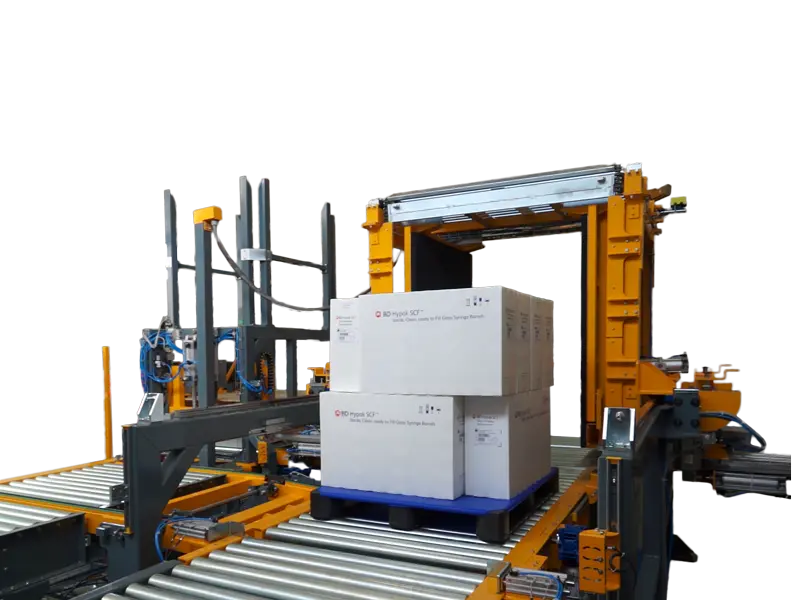Exploring the Realm of Hot Oil Temperature Control Units in Industrial Automation

As someone who’s spent three decades navigating the intricate corridors of the automation industry, I've seen technology transform our processes dramatically. Amongst these innovations, hot oil temperature control units stand out, being crucial in achieving precise thermal management across a variety of industrial applications. Let's delve into the fascinating world of these units, exploring their applications, features, and the compelling reasons for their growing adoption.
Mastering Thermal Precision: Dual and Single Zone Units
In the landscape of industrial automation, maintaining precise temperature controls can mean the difference between a successful operation and a costly failure. That’s where hot oil temperature control units, like those of the THC-D and THC-S series, come into play. These units are essential in applications demanding exact thermal regulation, such as die casting, rubber molding, press forming, and even in the precision-driven domains of printing and chemical processing.
The THC-D series, with dual zones for comprehensive control, offers both heating and cooling capabilities, operating seamlessly across a temperature spectrum of 140 to 570°F (60 to 300°C). This flexibility is indispensable in processes where dynamic temperature adjustments are required. Models vary in their heating capacity, ranging from 9 kW to 48 kW, providing options to tailor thermal management according to specific project demands.
In contrast, the THC-S series presents a single-zone setup that doesn’t compromise on features or performance. Similar to its dual-zone counterpart, it supports the same temperature range, catering to scenarios where singular thermal precision is key. This series, with its robust options extending from 9 kW to 48 kW heating capacity, maintains flexibility without the complexity of dual-zone systems.
Cutting-Edge Features for Modern Challenges
The hot oil temperature control units stand apart due to their integration of modern technologies, enhancing usability and operational efficiency. They've been crafted with a plethora of standard features that surpass competitive offerings, all while maintaining a highly competitive price point. Let's walk through some of these remarkable features:
-
Intelligent Control Systems: Equipped with PLC control and a vibrant color HMI screen, these units allow for intuitive interaction and precise adjustments. The job preset memory function further optimizes operational workflows by recalling previous settings efficiently.
-
Comprehensive Safety and Diagnostic Features: Safety is integral to design. The units feature sturdy flanged ball valves for leakproof operations, an auto exhaust function to prevent pressure build-up, and integrated fault alarms that provide visual and audible alerts. For further peace of mind, remote diagnostics via the internet ensure that technical issues are swiftly addressed.
-
Built to Last: Constructed with durability at the forefront, the units boast solid construction and a sealed system configuration that discourages oil oxidation, preserving the integrity and lifecycle of the oil used.
Real-World Applications and Success Stories
Having worked closely with various industrial sectors, I can confirm the transformative impact of employing these advanced temperature control units. In die casting facilities, for example, they have ensured consistent mold temperatures, reducing cycle times and improving product quality. Similarly, in rubber molding processes, the precise temperature control has mitigated common issues like shrinkage and warping, resulting in more reliable and durable products.
The versatility of these units goes beyond manufacturing, finding application in intricate chemical processes where stable conditions are paramount for reaction control and process safety. This adaptability showcases how such equipment not only meets the present demands but also anticipates future challenges of diverse industrial applications.
A Glimpse into Future Possibilities
As industries increasingly adopt automation and smart technologies, the future of temperature control units is rife with exciting possibilities. Enhanced integration with IoT, smarter AI-driven predictive maintenance, and even more energy-efficient operation are on the horizon. Stakeholders investing in these technologies are thus positioning themselves on the cutting edge of industrial innovation, ready to embrace future advancements.
Similar Technological Innovations
The landscape of temperature management also includes other cutting-edge devices like water-cooled temperature control units or infrared heating systems, each offering specific benefits tailored to unique industrial needs. These alternatives provide additional avenues for achieving highly customized thermal management solutions.
In conclusion, whether you’re looking to enhance operational efficiency or improve product quality in your industrial processes, hot oil temperature control units offer a robust and reliable solution. They embody a blend of technology and practicality that is indispensable in modern industry, playing a pivotal role in heralding a new era of sophisticated thermal management. As I reflect on the future, I am convinced that the integration of these technologies will be a catalyst for innovation, shaping industries for decades to come.




